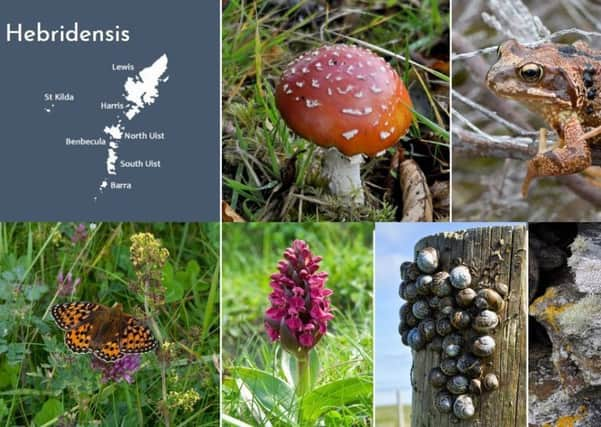Discovering the natural heritage of the Islands - biological record


The community beach cleans are a great example of what can be achieved by people deciding to act rather than watch local politicians procrastinate.
In 2012 a group of local naturalists decided that, after waiting for 10 years for the local authority to implement a recommendation to create a local environmental record centre they would take action.
Advertisement
Hide AdAdvertisement
Hide AdSeven years later, Outer Hebrides Biological Recording (OHBR) is still a very small voluntary organisation but it now has a reputation as a very professional organisation in the world of biological recording.
Each year we add over 9,000 observations of plants, animals and fungi to our database and make these freely available through the NBN Atlas Scotland (https://scotland.nbnatlas.org/).
So, if you want to know about the distribution of frogs on Lewis or how many species of beetles have been recorded on Eriskay, this information is there for you to discover.
This is still a work in progress, but we know a great deal more about the wildlife of the islands and where it is found than we did 7 years ago, but more importantly it is easily available and there for you to use.
Advertisement
Hide AdAdvertisement
Hide AdThe information we collect is used by a variety of educational and conservation bodies, environmental consultants and government institutions for a variety of purposes, from teaching and scientific research to land management and biodiversity monitoring.
This is important, but we also want to share our knowledge with you, so that the local community and visitors can discover and enjoy the richness of wildlife and appreciate why our natural heritage is so important.
We do our best to share our enthusiasm for our wildlife and your knowledge through our website hub (http://www.hebridensis.org), our leaflets and our social media sites, but it is only now that we have managed to produce a publication to give a comprehensive picture of our activities.
Robin Sutton has compiled a beautifully illustrated review and summary of the biological records submitted to OHBR in 2017.
Advertisement
Hide AdAdvertisement
Hide AdIt reflects the hard work and enthusiasm of the resident amateur biological recorders, the generosity of the visiting naturalists in sharing their observations, and the interest of the local community in their natural environment. It is much more than a statistical summary: maps showing the extent of the survey work, from the Butt of Lewis to Barra and Vatersay, accompany sections on the animals, plants and fungi, describe the great diversity of species that have been recorded.
There is everything from whales to jellyfish and orchids to puffballs.
For anyone with an interest in the natural world Discovering our Natural Heritage provides an insight into the fascinating and diverse nature of the Outer Hebrides.
This report is available on the OHBR website (https://www.ohbr.org.uk/publications.php). OHBR is a very small voluntary organisation and a key part of its work is to raise public awareness about the importance of biodiversity and our natural environment.
The support of Scottish Natural Heritage enables us to engage with the local community and visitors to the islands to discover and enjoy the landscapes and wildlife of the Outer Hebrides.